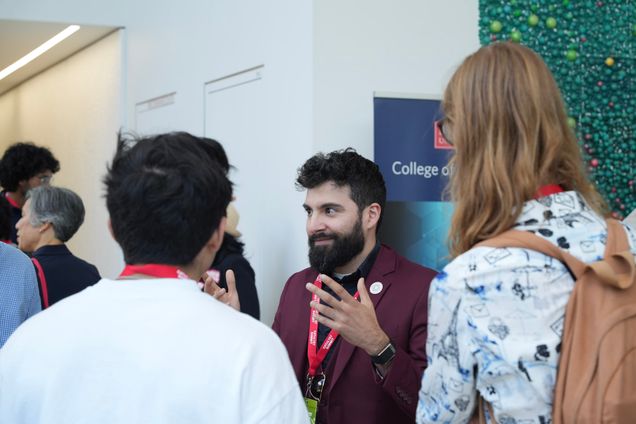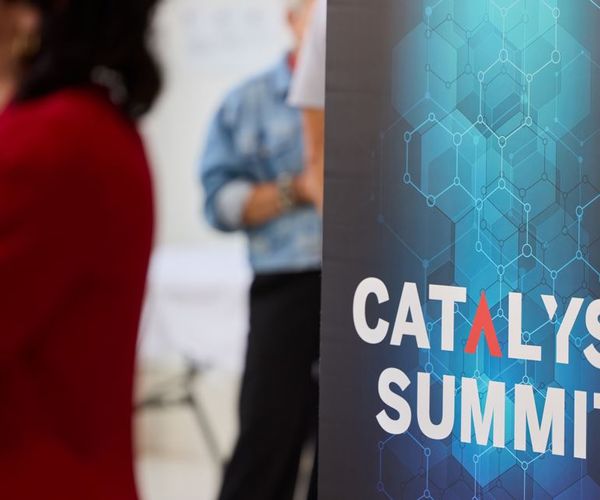Catalyst Summit assembles the researchers and industry leaders powering a sustainable future
Scores of alumni, faculty, students, and friends of Boston University gathered to talk about their industry journeys and learn about tomorrow’s energy technologies—from self-cleaning solar panels to heat-storing ceramics—at the BU College of Engineering’s 2025 Catalyst Summit. Part of BU Alumni Weekend, the event was a showcase of groundbreaking research and fresh ideas in energy, AI, and sustainability technology.
“These pioneering inventions in AI, computing, and power systems are engineering a more resilient, intelligent, and equitable energy future,” said ENG Dean Elise Morgan during opening remarks in the Eichenbaum Colloquium Room at the Rajen Kilachand Center for Integrated Life Sciences & Engineering (CILSE). “We are tackling the biggest challenges facing our world today.”
Engineering is a helping profession

Morgan, who is also the Maysarah K. Sukkar Professor of Engineering Design & Innovation, pointed out that engineering is not often regarded as one of the “helping” professions, like medicine or social work. “But it is,” she said. “Engineering is truly a helping profession, because of the sheer numbers of people whose lives are positively affected by engineering discoveries: Hearing aids, video calls, high-speed transit, prosthetic limbs, pacemakers–each of these technologies helps millions of people live healthier, more connected, more fulfilling lives.”
“And it is engineers who will meet the biggest challenges of today,” she added, “from climate change to global health, cyber security to food insecurity, urbanization and habitat destruction to Alzheimer’s disease and dementia.”
BU engineers, in particular, are well prepared to meet those challenges, Morgan said, in part because of ENG’s strong sense of social responsibility. “Embedded in our ethos is the conviction that engineering should always be in service to society. That is why I believe no college of engineering is better poised to shape a future where engineering discoveries enable boundless human progress for every person, everywhere.”
How do you make all this happen?

Sharad Rastogi (ENG’91) framed the challenge that was the focus of this year’s Catalyst Summit: “As the pace of development accelerates around the world, billions of dollars are going to be spent to build data centers to meet the energy requirements of AI, and that will have a massive impact on its carbon footprint,” said Rastogi, CEO of Work Dynamics Technology at JLL, as he introduced a faculty panel on energy innovations. “And yet, all these companies have very aggressive net-zero goals. So how do you make all this happen? How do you drive this growth, and yet reduce your carbon footprint? And the answer is: technology.”
The ENG faculty on the panel are developing some of the very technologies that might solve this challenge. Associate Professor Emily Ryan (ME, MSE) studies advanced energy storage and thermal systems for clean, efficient power. She is also an associate director of the BU Institute for Global Sustainability, a co-PI on a prestigious NSF Research Traineeship Grant to help PhD students collaborate on energy storage solutions, and a PI on a Massachusetts state grant aimed at effecting an equitable energy transition.
“We know we have to reduce our CO2 emissions, and to do that, we need alternative sources–we have to get away from fossil fuels and move toward renewables,” Ryan said. “But one of the challenges with renewables is that they’re variable,” as wind and solar power are produced intermittently.
“We can’t just look at generating the power; we need to store it,” Ryan said. “And when it comes to storage, lithium-ion batteries are not going to be the solution we need.” One alternative that Ryan and colleagues are working on is lithium-metal batteries, which use solid lithium metal as the anode (positive side), potentially giving them much higher energy density than lithium-ion batteries, which use a graphite anode.
Working across fields
Another promising method is to store energy as high-temperature heat in ceramic composite materials, said Assistant Professor Sean Lubner (ME). “That at first sounds scary, but it is actually one of the safest ways to store energy at scale,” Lubner said, “because thermodynamically, heat is the only form of energy that cannot explode!”
Lubner is also working on passive solar-powered systems to directly capture carbon dioxide. “If we’re really shooting for true sustainability, long-term sustainability for many generations to come,” he said, “then in addition to reducing emissions, we also need to actively remove a lot of the CO2 that is already released in the atmosphere.”
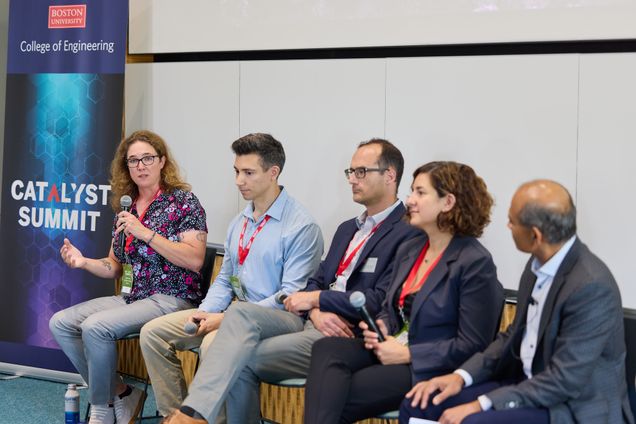
This challenge is daunting but solvable, Lubner said. “And one way that engineers can solve this problem is not just by creating the technology to solve it, but also by working across fields, like economics, to align the incentives. If we can build a technology that is scalable, that helps solve these problems, and is profitable and desirable for companies to develop, then it’s a win-win, and it’s moving us in the right direction.”
Converging on solutions
Professor Ayse Coskun (ECE, SE), also advocated for a whole-system approach to the energy problem. Coskun, who is ENG associate dean for research and faculty development and director of the Center for Information and Systems Engineering (CISE), researches sustainable AI data centers that adapt to changing power demands.
“AI power demand is explosive,” Coskun said. “Tens of gigawatts of power is expected to be demanded by AI data centers over the next five to ten years, and we can’t just magically expand our power grid. It’s not just a matter of how to generate new power; it’s a matter of how we build energy systems and computing systems in a way that’s sustainable and can enable fast and sustainable AI growth and growth of our energy system. It has to be done together, so it’s not just an add-more-power kind of problem; it’s truly an interdisciplinary, convergent problem.”
Associate Professor Emiliano Dall’Anese (ECE), who is working on real-time control strategies for distributed energy resources for resilient, efficient power grids, agreed. “Convergence in research and critical thinking is essential for developing transformative solutions in modern power and energy systems,” he said. “Convergence has an additional dimension, where academic research is integrated with industry practices and policies to maximize technological impact.” To that end, Dall’Anese is organizing a CISE workshop in November, he said, “to bring together technical experts, industry, and government to discuss transformative solutions for the future grid.”
Recognition for exceptional alumni
A centerpiece of Catalyst Summit was the conferring of this year’s distinguished alumni awards, recognizing exceptional alumni who are making an impact in their professions and their communities. For 2025, Huntley Myrie (ENG’95) received the BU Engineering Distinguished Alumni Award, while Devika Gholap (ENG’18) received the BU Engineering Distinguished Young Alumni Award.
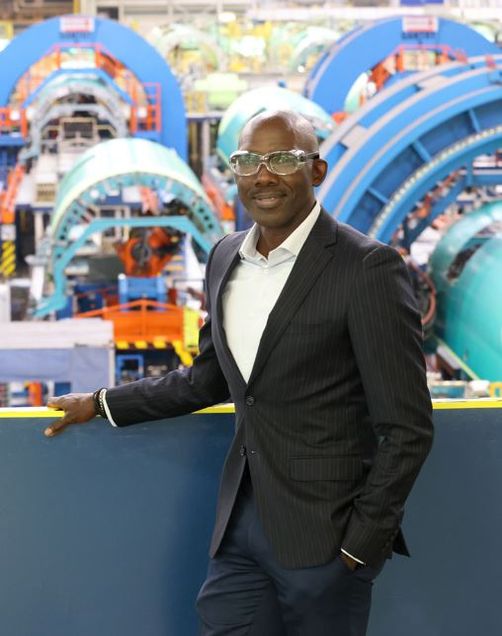
Myrie is former vice president of strategy and business development, commercial, at Spirit Aerosystems. After growing up in rural Jamaica, serving honorably in the U.S. Army for six years, and putting himself through college in New York, Myrie earned a master’s degree in mechanical engineering from BU while working full-time for General Electric and embarking on a career as an aerospace engineer and executive.
“Huntley has said that his studies at BU opened his eyes to systems-level thinking and served as a catalyst for helping him merge his technical experience with his financial and business experiences to be an effective leader in the aerospace industry,” said Morgan. “Huntley is also being recognized for his philanthropic and community involvement,” including serving as executive sponsor for a STEM partnership between GE and the Cincinnati Public Schools.
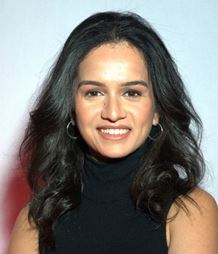
Gholap is chief product officer of OptraSCAN, a company dedicated to revolutionizing the adoption of digital pathology. “With a mission to democratize access to precision diagnostics, Devika has spearheaded the development of innovative technologies, including AI-powered cancer screening tools, virtual staining platforms, and digital imaging scanners used in over 30 countries,” said Morgan. “She is also actively involved in mentoring women in STEM and supporting early-stage founders in the health technology space.
“Devika shared with me that hands-on projects in BU’s EPIC Lab—particularly reverse-engineering exercises—were pivotal in shaping her technical mindset and approach to problem-solving. They taught her to analyze complexity, think systematically, and create meaningful solutions.”
Devika Gholap was unable to attend Catalyst Summit in person, but she appeared via a recorded message, and her sister Eesha Gholap (CAS’22) accepted the award on her behalf.
Fireside chat with founders
A recipient of the BU Alumni Award, Russ Wilcox (CAS’13), CEO of urban planning tech startup Artifex AI, moderated a discussion about entrepreneurship with guests Ryan Eriksen (CAS’10, ENG’15) and Tomás Villalón Jr. (ENG’18, ’18)

Eriksen discussed the path to commercialization for the technology he and Annie Rabi Bernard (ENG’15, ’20) developed in the lab of Malay Mazumder, former ENG research professor of electrical and computer engineering and materials science and engineering. (Bernard, who was unable to attend due to travel issues, responded to Wilcox’s questions via a recorded message.) The duo’s system uses small amounts of static electricity to clear dust and sand from a solar panel in less than two minutes. They estimate that if this electrodynamic screen technology could be scaled up, it could save the world at least four billion gallons of water a year. After co-founding a start-up, Sol Clarity, Bernard is now working with the International Development Company to pilot the technology in the Middle East, while Eriksen has become director of engineering at Heliotrope Photonics, where he is leading the development of advanced
“We wouldn’t have been able to spin off without the BU Office of Technology Development,” Eriksen said. “When you start off as a scientific founder, you think you know what you need to do to succeed, but it turns out that you have no idea, and the Office of Technology Development was really good at showing us that [and] getting us to go out there and talk to people—get out of the lab, out of the ivory tower, and talk to people out in the field who are actually doing what you want to do.”
Villalón is CTO and co-founder of Phoenix Tailings, whose mission is to become the world’s first clean mining and metals production company. Villalón is leading the development of innovative technologies for extracting value from mining byproduct, or “tailings,” in an economically sustainable and environmentally friendly way. Currently, most rare earth metals—which are critical to renewable energy technology—are produced overseas in ways that generate toxic waste elements. But rare earth metals do exist and can be mined in the U.S. Villalón’s team processes the mining tailings and produces additional metals, with no waste.
Praising his former ENG advisor and mentor, Villalón said, “Professor Uday Pal [ME, MSE] is an industrialist who happens to be an academic, and that preparation was exactly what I needed, because in my industry, the margins are so thin, there’s no margin for error. And at the same time, you’re trying to innovate. He knew how to bridge that.
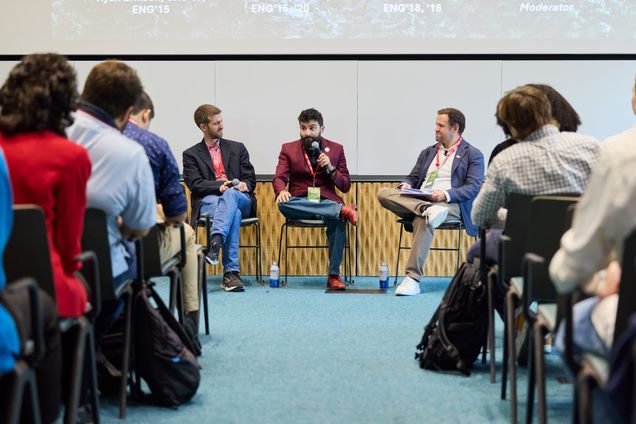
Eriksen and Villalón both said that in retrospect they appreciated BU’s size and its diversity of backgrounds, disciplines, expertise, and perspectives. “You don’t even realize it until you leave campus that this is a rather unique environment,” said Villalón. “One of the things I took away from this is, the people component. I learned the technical stuff, the trial and error, the modeling, yes, but in heavy industry, it’s the people that will be your greatest pain or your greatest asset. So finding that network, knowing how to engage the right person at the right time—that’s one thing I was able to get here.”
Student showcase
That variety and breadth was evident at Catalyst Summit across the poster presentations by BU ENG student clubs, such as BU Gliding & Soaring, Terrier Motorsport, and the BU Rocket Propulsion Group, as well as the BU chapters of national organizations, including the National Society of Black Engineers, Graduate Women in Science and Engineering, and Engineers Without Borders.
In fact, one of the college’s strategic goals going forward, Morgan said, is to strengthen community and inclusion. “The world needs more engineers—we can’t afford to exclude or lose talent, nor can we accept conditions that keep our talent from flourishing.”
Student attendees also appreciated the chance to hear from Terriers who are already crafting engineering solutions, translating them into financial reality, and making a difference in the world. Circulating the CILSE lobby during the networking luncheon that capped off Catalyst, Will Sheppeck (ENG’26) said, “Hearing the stories of alumni who got their degrees just five to ten years ago and are now accomplished, articulate professionals and even leaders in industry is very motivating. That’s why I come to events like this.”
